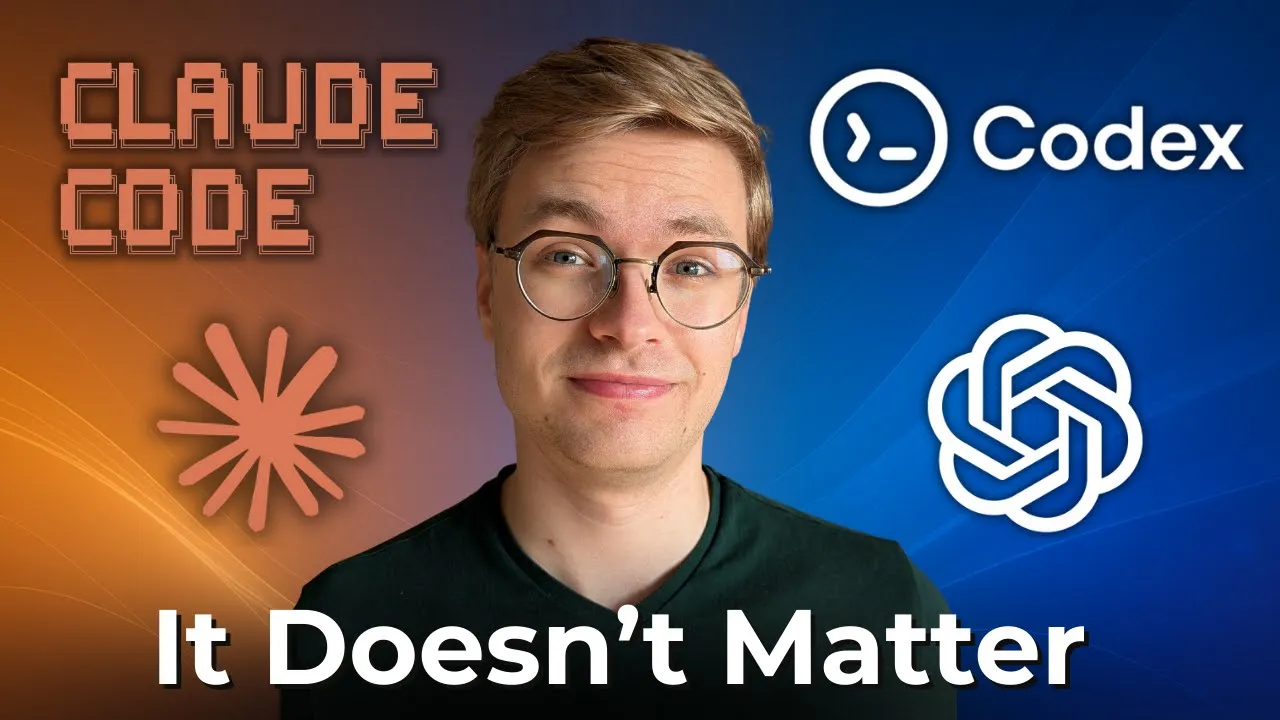ChatGPT vs Claude for Programming - A Developer's Reality Check
The ChatGPT vs Claude programming debate has reached fever pitch. Forums overflow with screenshots comparing code outputs, YouTube channels run elaborate tests, and developers argue endlessly about which AI produces cleaner functions. But after building production AI systems at major tech companies, I’ve discovered these comparisons miss the fundamental reality of how AI coding actually works.
The ChatGPT vs Claude False Dichotomy
Every week, someone posts a “definitive” ChatGPT vs Claude programming comparison. They’ll show ChatGPT solving a LeetCode problem elegantly while Claude struggles, or vice versa. These posts get thousands of views and shape developer opinions, but they’re based on a flawed premise.
The truth? Both ChatGPT and Claude will give you different code for the same prompt if you run it multiple times. I’ve tested this extensively: ask ChatGPT to build a REST API five times, and you’ll get five different architectural approaches. Some will use Express, others Fastify. Some will implement middleware differently. Some will structure error handling in completely unique ways.
This isn’t a flaw in ChatGPT or Claude, it’s the nature of probabilistic language models. They’re designed to explore different solution paths, not produce identical output. Comparing single outputs is like judging musicians by one random note they play.
Why Your Programming Language Changes Everything
ChatGPT might excel at Python automation scripts while Claude dominates TypeScript React components. Or the opposite might be true next week after model updates. The performance varies dramatically based on the specific programming context.
I’ve implemented systems where ChatGPT understood complex Python data science workflows intuitively but struggled with Rust memory management patterns. Meanwhile, Claude handled the Rust elegantly but required more guidance for NumPy operations. Neither tool is universally superior, they have different training data distributions and architectural biases.
Your existing codebase also influences performance. ChatGPT might better understand your naming conventions while Claude grasps your architectural patterns more quickly. These differences emerge from how each model processes context, not from inherent superiority.
The Productivity Reality Check
Developers chasing the “best” AI tool remind me of programmers who spent the 2000s switching between IDEs every month. While they optimized their tool choice, others were shipping products with “inferior” editors.
The highest-performing developers in my teams don’t use the “best” AI tool, they use one tool exceptionally well. They know exactly how to prompt ChatGPT for architectural decisions or how to guide Claude through complex refactoring. This expertise took months to develop and pays dividends daily.
Consider this: switching from ChatGPT to Claude means relearning prompt patterns, adjusting to different response styles, adapting to new error messages, and rebuilding muscle memory. That transition cost often exceeds any marginal capability differences between tools.
Building Beyond the ChatGPT vs Claude Debate
Your success with AI programming depends far more on your fundamental skills than your tool choice. Neither ChatGPT nor Claude can replace understanding of algorithms, system design, or debugging techniques. They’re amplifiers, not replacements.
When ChatGPT generates a solution with a subtle race condition, you need to spot it. When Claude suggests an architecture that won’t scale, you need to recognize the limitation. These tools accelerate development for those who already understand programming, they don’t eliminate the need for that understanding.
I’ve seen junior developers struggle equally with both ChatGPT and Claude because they lack the foundation to evaluate and guide AI output. Meanwhile, experienced developers achieve remarkable productivity with either tool because they understand what they’re building.
The Strategic Selection Framework
Instead of comparing ChatGPT vs Claude in abstract benchmarks, evaluate them against your specific needs. ChatGPT’s plugins and web browsing might be essential for your research-heavy development. Claude’s larger context window might be crucial for your legacy codebase refactoring.
Consider practical factors that actually impact daily work: API pricing for your usage patterns, integration with your development environment, response time during your peak hours, and reliability for your critical workflows. These mundane considerations matter more than benchmark performances.
Pick based on a one-week trial with your actual projects, not based on social media comparisons. Use real prompts from your daily work, not contrived examples designed to show differences.
Mastery Over Migration
The developers achieving 10x productivity gains aren’t the ones who picked the “right” tool between ChatGPT and Claude. They’re the ones who picked any reasonable tool and invested in mastery.
They’ve built prompt libraries tailored to their tool’s strengths. They understand how to decompose problems in ways their chosen AI handles well. They know when to let the AI explore solutions and when to provide rigid constraints. This expertise only comes from sustained usage with a single tool.
Every migration between ChatGPT and Claude resets this expertise accumulation. You lose your refined prompts, your intuition for the tool’s biases, and your workflow optimizations. The switching cost is invisible but substantial.
The Path Forward
Stop reading ChatGPT vs Claude comparisons and start building expertise with whichever tool you’re currently using. If you’re not using either yet, flip a coin and commit for at least three months. The marginal differences between them pale compared to the expertise gap between casual and power users.
Focus on developing skills that transcend specific tools: prompt engineering principles, AI error pattern recognition, and hybrid human-AI workflows. These capabilities remain valuable regardless of whether ChatGPT, Claude, or something entirely new dominates next year.
The real competitive advantage isn’t in using the “best” AI tool, it’s in using any AI tool better than your competition. That requires depth, not breadth. It requires commitment, not constant comparison.
To see exactly how to implement these concepts in practice, watch the full video tutorial on YouTube. I walk through each step in detail and show you the technical aspects not covered in this post. If you’re interested in learning more about AI engineering, join the AI Engineering community where we share insights, resources, and support for your learning journey.

